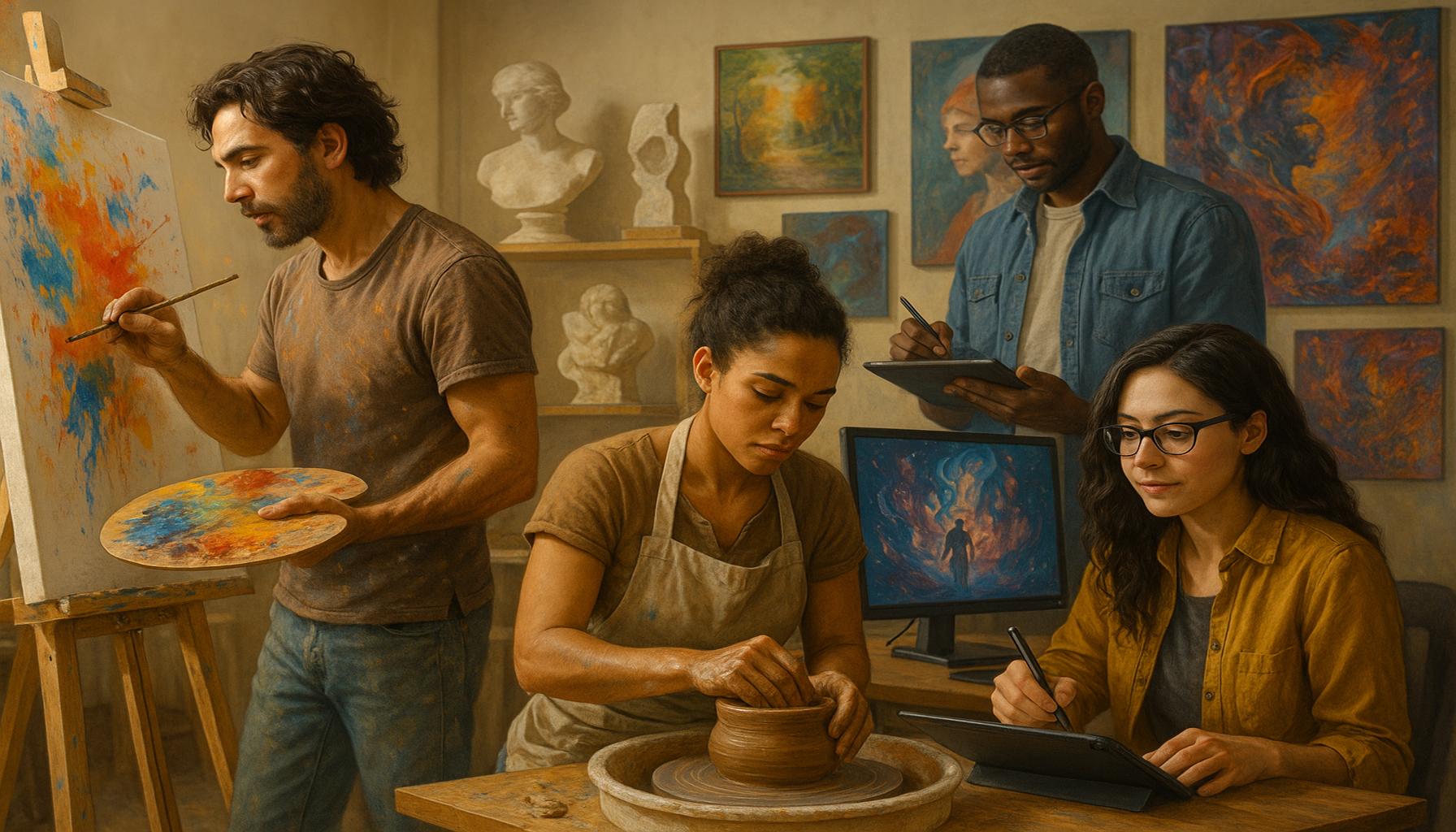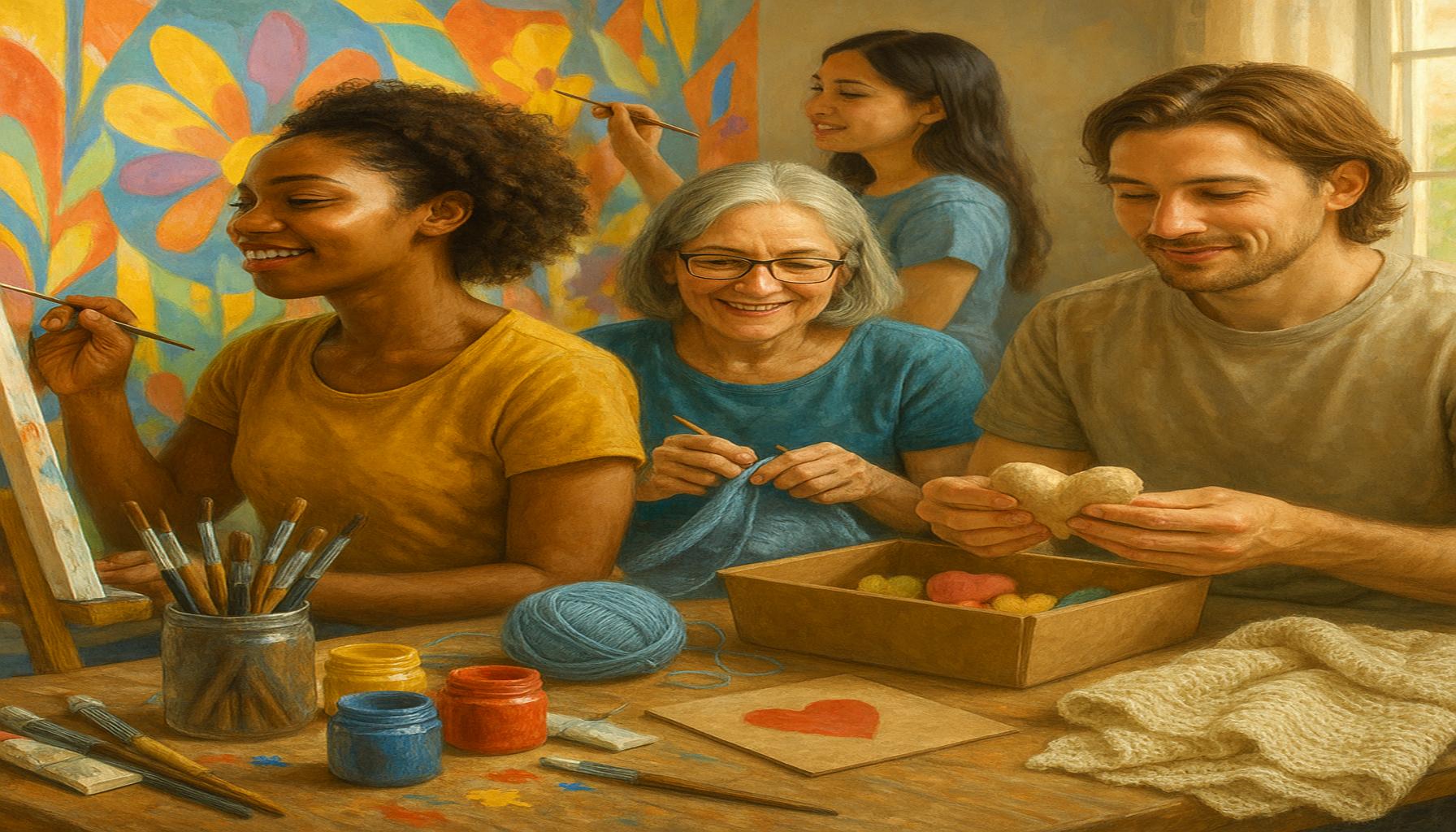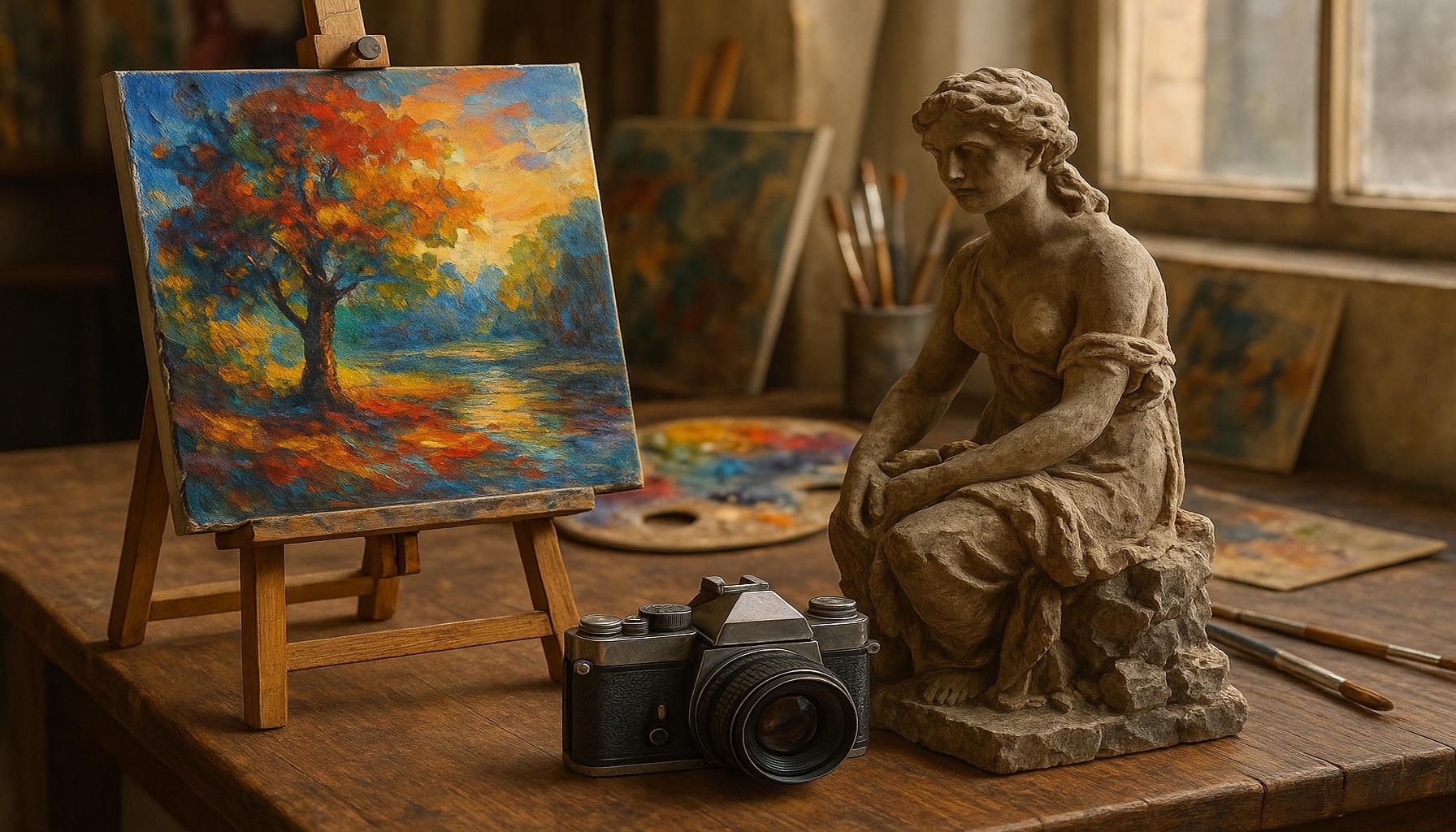Art in the Digital Age: How New Technologies Are Transforming Artistic Hobbies
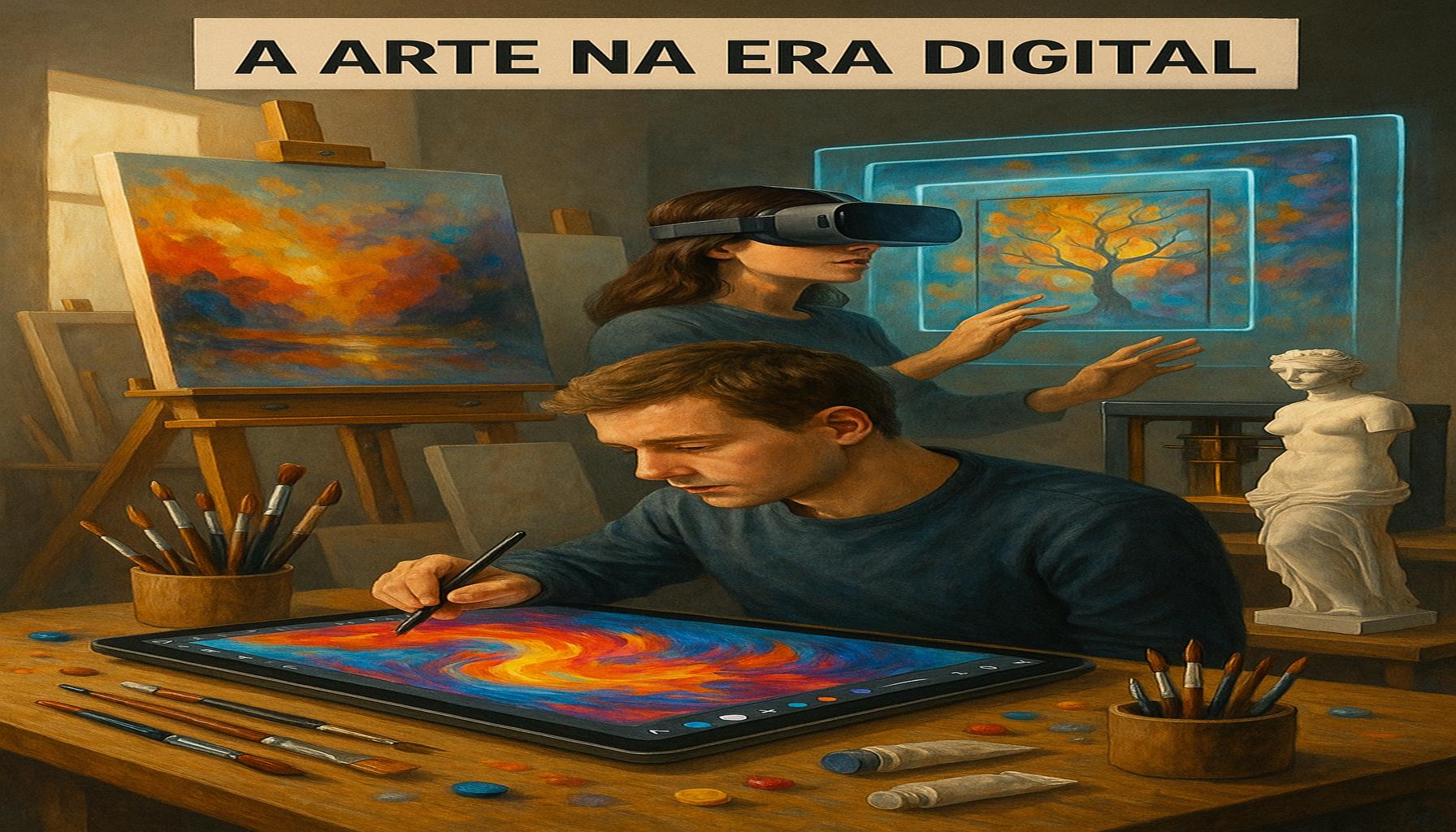
Understanding the Digital Evolution in Art
The intersection of art and technology is creating a dynamic landscape for artists and hobbyists alike. What once revolved around traditional mediums like oil paints and canvas is now flourishing into a diverse range of possibilities thanks to advancements in digital tools. Artists today find themselves equipped with innovative technologies that not only bolster their creative processes but also redefine the overall experience of art.
Emerging technologies are not just enhancing the creative process but are also transforming how art is created, shared, and experienced. Consider the various tools and platforms fueling this revolution:
- Digital painting and drawing software like Procreate and Adobe Fresco offer artists rich features that mimic traditional drawing while allowing for limitless experimentation. For example, Procreate’s layering and brush customization options enable users to create intricate artworks directly on their tablets, making it an essential tool for both professionals and newcomers.
- 3D printing technology revolutionizes how we realize digital creations. Artists can design complex sculptures on their computers and then bring these designs to life in physical form. This technology not only broadens artistic expression but also enables unique commercial opportunities, as artists can create limited-edition works that appeal to collectors.
- Virtual reality platforms are pushing the boundaries of artistic experience. Through VR, users can enter immersive environments where they can interact with art in a three-dimensional space. For instance, apps like Tilt Brush allow users to paint in a virtual space, creating artworks that exist beyond the confines of a traditional canvas.
- Social media platforms like Instagram and TikTok provide artists with the ability to share their work with a global audience quickly. These platforms facilitate direct engagement between creators and viewers, offering instant feedback and fostering a sense of community that was previously unavailable to many artists.
In addition to transforming the creative landscape, these innovations are also broadening access to artistic expression. More individuals can engage with arts as a hobby, leading to:
- A surge in online art tutorials and workshops, where anyone can learn from experienced artists without geographical limitations. Platforms like YouTube offer countless free resources, making art education more accessible than ever.
- A vibrant community of digital artists sharing techniques and inspiration through online forums and social media, allowing for collaboration and mentorship. Websites like DeviantArt and ArtStation serve as galleries where artists can showcase their work and connect with peers.
- New trends like NFTs (Non-fungible tokens) challenging the traditional notions of ownership and value in art. With NFTs, artists can sell digital art in unique formats, creating a new avenue for artists to monetize their work while engaging with collectors in innovative ways.
As we delve deeper into this digital transformation, it becomes clear that technology is not merely a tool for creation but a catalyst for change within the entire art community. Emerging tools and platforms are reshaping artistic hobbies, making them inclusive, collaborative, and ever more dynamic in the digital age.
DISCOVER MORE: Click here to learn about the benefits of art on your mental health</p
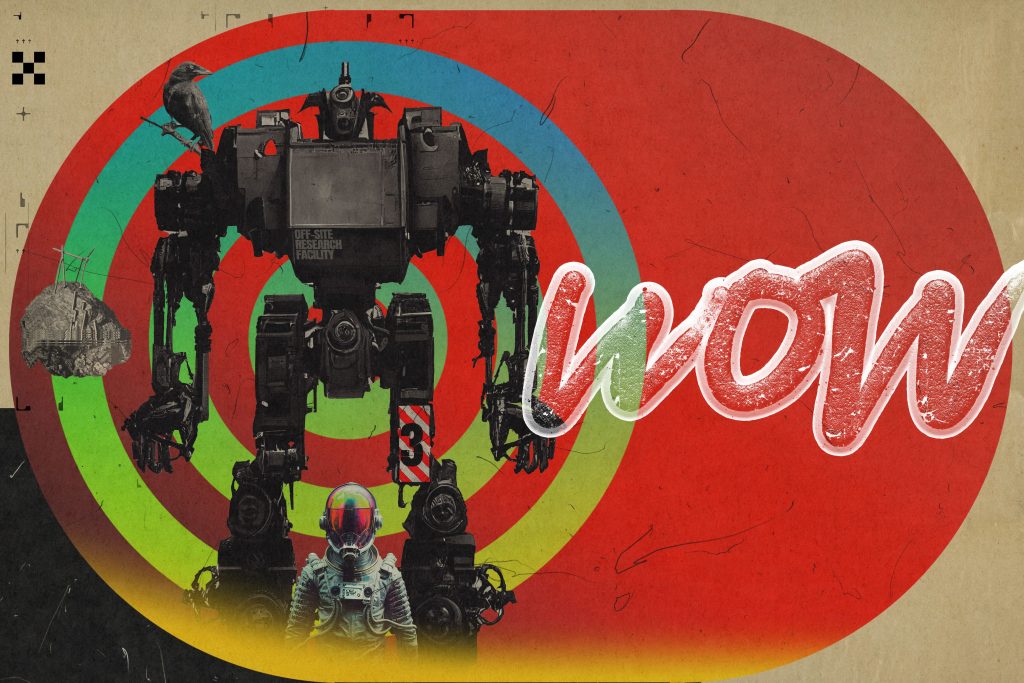
Unleashing Creativity: The Digital Toolbox for Artists
The digital age has ushered in a new era for artistic hobbies, equipping artists with an array of technologies that push the boundaries of creative expression. As traditional techniques coexist with digital advancements, the creative landscape is becoming increasingly intricate and versatile. This section delves into the myriad of tools that are redefining how art is practiced, appreciated, and shared.
At the forefront of this digital renaissance are graphic tablets and touchscreen devices, which facilitate a seamless integration of traditional artistry with modern technology. Artists no longer need to worry about purchasing expensive canvases or paints. Instead, devices like the Wacom Cintiq and iPad Pro allow for intuitive drawing experiences. The touch-sensitive screens, along with pressure-sensitive styluses, create a natural feel that mirrors the qualities of traditional media while offering flexibility in layering and editing.
Moreover, the rise of augmented reality (AR) in art presents a groundbreaking approach to both creation and interaction. Artists can overlay digital images onto real-world environments, creating engaging experiences for audiences. Applications like Artivive enable creators to transform static art pieces into dynamic visual narratives, captivating viewers with animation and story. This marriage of technology and creativity is not just revolutionary; it also encourages deeper engagement with art.
Furthermore, the accessibility of artistic software has broadened the horizons for casual and aspiring artists. Programs like Blender and SketchUp have made 3D modeling a reachable goal for many hobbyists. These tools empower users to design everything from intricate character models to architectural visualizations, allowing anyone with a passion for creativity to explore the possibilities of three-dimensional art.
- Community engagement through digital platforms is fostering artistic collaboration. Websites like Behance and Dribbble enable artists to showcase their portfolios and receive constructive feedback from peers across the globe. This type of constructive criticism and encouragement can propel beginners forward, offering insight that may have been inaccessible in traditional art settings.
- Gamification of art education is also worth noting. Platforms like Drawabox and various mobile apps gamify the learning process, allowing individuals to participate in challenges and set goals that enhance skill acquisition. These tools encourage regular practice and foster a commitment to continuous improvement in artistic endeavors.
- Digital art competitions and showcases are emerging as vibrant spaces for artists to gain recognition and prizes. Initiatives like the Digital Art Festival draw participants from around the world, giving creators a chance to share their talents and engage with a community that shares their interests.
The changes brought about by digital technology are profound and multifaceted, transforming the relationship artists and hobbyists have with their mediums. With tools that promote accessibility, creativity, and community engagement, the digital age stands as a strong testament to the enduring nature of artistic exploration.
Art in the Digital Age: How New Technologies Are Transforming Artistic Hobbies
As we dive deeper into the intricacies of how technology is redefining artistic hobbies, it’s essential to recognize the multifaceted transformation facilitated by digital innovations. From virtual reality to artificial intelligence, these advancements are not merely tools but catalysts for a new wave of creativity.
Expanding Creative Horizons
Digital painting and illustration software has taken the art world by storm, enabling both amateur and professional artists to express themselves with unparalleled ease. Programs like Procreate and Adobe Fresco offer powerful resources that replicate traditional artistic methods while adding layers of complexity that could only be achieved digitally. The ability to undo mistakes, utilize infinite canvas spaces, and seamlessly blend colors offers an advantage that traditional mediums cannot match.
Accessibility and Community Building
The internet has shattered geographical barriers, allowing artists from diverse backgrounds to connect and collaborate like never before. Social media platforms, such as Instagram and Pinterest, serve not only as showcases for art but as community hubs where people gather to share ideas and critique one another’s work. This democratization of artistic conversation helps burgeon new talents who can gain visibility and build networks that were once hidden behind conventional galleries.
Innovations in Art Distribution
Moreover, the emergence of NFTs (Non-Fungible Tokens) has revolutionized the way digital art is perceived and sold. Artists can now monetize their work directly through blockchain technology, ensuring ownership and authenticity. This technology has democratized the art market, allowing artists to reach wider audiences without intermediaries, a powerful shift that elevates unique artistic expressions in the digital realm.
| Category | Key Features |
|---|---|
| Digital Art Tools | Flexibility, undo options, and diverse brushes |
| Community Engagement | Instant feedback, collaboration opportunities, and networking |
| NFTs in Art | Ownership verification, new revenue streams, and global reach |
These elements collectively illustrate how digital technology is not just enhancing but revolutionizing artistic hobbies, inviting enthusiasts to explore a world limited only by imagination. In this ever-evolving landscape, staying informed about emerging practices and tools is vital for any artist seeking to thrive in the digital age. With such exciting developments, the future of artistic hobbies appears bright, flooded with possibilities awaiting discovery.
DIVE DEEPER: Click here to discover more about digital art tools
Redefining Artistic Expression: The Role of Social Media and Online Platforms
The impact of social media on the world of art cannot be understated. Platforms like Instagram, Pinterest, and TikTok have become vital avenues for artists to showcase their work, connect with a global audience, and build personal brands. Artists are no longer reliant on galleries or local exhibitions to gain visibility; instead, they can reach potential collectors and fans with a few clicks. By utilizing hashtags, engaging storytelling, and visually compelling content, creators can quickly establish a presence in the highly competitive realm of digital art.
Instagram, in particular, has revolutionized the way visual art is consumed. With over a billion users, the platform serves as a gallery for both professional artists and hobbyists. The instantaneous feedback loop provided by likes, comments, and shares fosters a sense of community and validation, motivating many artists to continue honing their skills. Digital art trends, such as the viral “art challenges,” encourage participation from novice and experienced artists alike, resulting in collaborative movements that further underscore the power of community.
In addition to fostering connections, social media has also enabled artists to monetize their work in innovative ways. Through platforms like Patreon and Ko-fi, creators can receive financial support directly from their followers in exchange for exclusive content, tutorials, and behind-the-scenes glimpses into their creative processes. This model not only empowers artists economically but also allows them to maintain artistic freedom without relying solely on commercial galleries or sales through traditional means.
- Online art marketplaces such as Etsy and Saatchi Art offer an affordable gateway for artists to sell their creations to a global audience. By eliminating geographical limitations, these platforms encourage artists to reach markets that were previously unavailable, opening the door for diverse buyers who appreciate unique pieces that may not be found in large retail stores.
- Virtual exhibitions and digital galleries have become increasingly popular, especially as a response to the COVID-19 pandemic. Online events allow artists to showcase their work in a curated setting, often with interactive components that enhance viewer engagement. This shift not only democratizes access to art but also challenges the traditional concepts of space and display.
- Art collaborations facilitated through online platforms have led to the creation of innovative projects that blend different forms of media. For instance, musicians, visual artists, and writers can collaborate across digital platforms to produce multi-disciplinary works that push the boundaries of what art can be. This cross-pollination of ideas inspires fresh perspectives and fosters creative evolution.
Moreover, the concept of artistic NFTs (non-fungible tokens) has emerged as a hot topic in the art world. These unique digital assets provide artists with new opportunities to sell and authenticate their works in the online realm. By creating a verifiable digital footprint, artists can retain ownership and establish provenance while tapping into the collector base of cryptocurrency enthusiasts. The NFT craze illustrates how rapidly evolving technology can impact not only the creation and distribution of art but also its valuation in the market.
The integration of technology into artistic hobbies fosters a climate of ongoing exploration and innovation. As new digital platforms and tools continue to emerge, they present unprecedented opportunities for artists to redefine their practices and connect with audiences. With a synergy that combines creativity, community, and commerce, the digital age is setting the stage for a continually evolving artistic landscape.
DISCOVER MORE: Click here to elevate your plating skills
Embracing the Artistic Horizon: The Future of Art in the Digital Realm
As we navigate through the captivating intersection of art and technology, it becomes increasingly clear that the digital age is reshaping artistic hobbies in profound ways. From the democratization of platforms that allow artists to reach global audiences to the innovative monetization of creative work through subscriptions and NFTs, the landscape of art is transforming before our eyes. These developments are not only changing how art is created and distributed but are also redefining what it means to be an artist in today’s world.
Digital tools and online networks have empowered artists, granting them the means to express their creativity without the constraints of traditional infrastructures. Enthusiasts and professional artists alike are discovering that their work can thrive in this new ecosystem, fostering a sense of community that transcends geographical boundaries. Importantly, this shift is creating spaces for diverse voices and perspectives, enriching the tapestry of the artistic world.
Looking ahead, the fusion of technology and art is set to continue evolving. Artists might harness advancements in AI, virtual reality, and augmented reality to push creative boundaries further than ever before. As we witness these exciting changes, it is crucial for both artists and art lovers to embrace this moment of transformation. Encouraging collaboration, supporting local and online creators, and remaining open to new artistic expressions will be pivotal in shaping a vibrant future for art in the digital age.
In conclusion, the transformation of artistic hobbies through technology is not just a trend; it is an ongoing revolution that invites continuous exploration. By understanding and engaging with these advancements, we can celebrate the diverse landscapes of creativity that the digital era brings forth.
